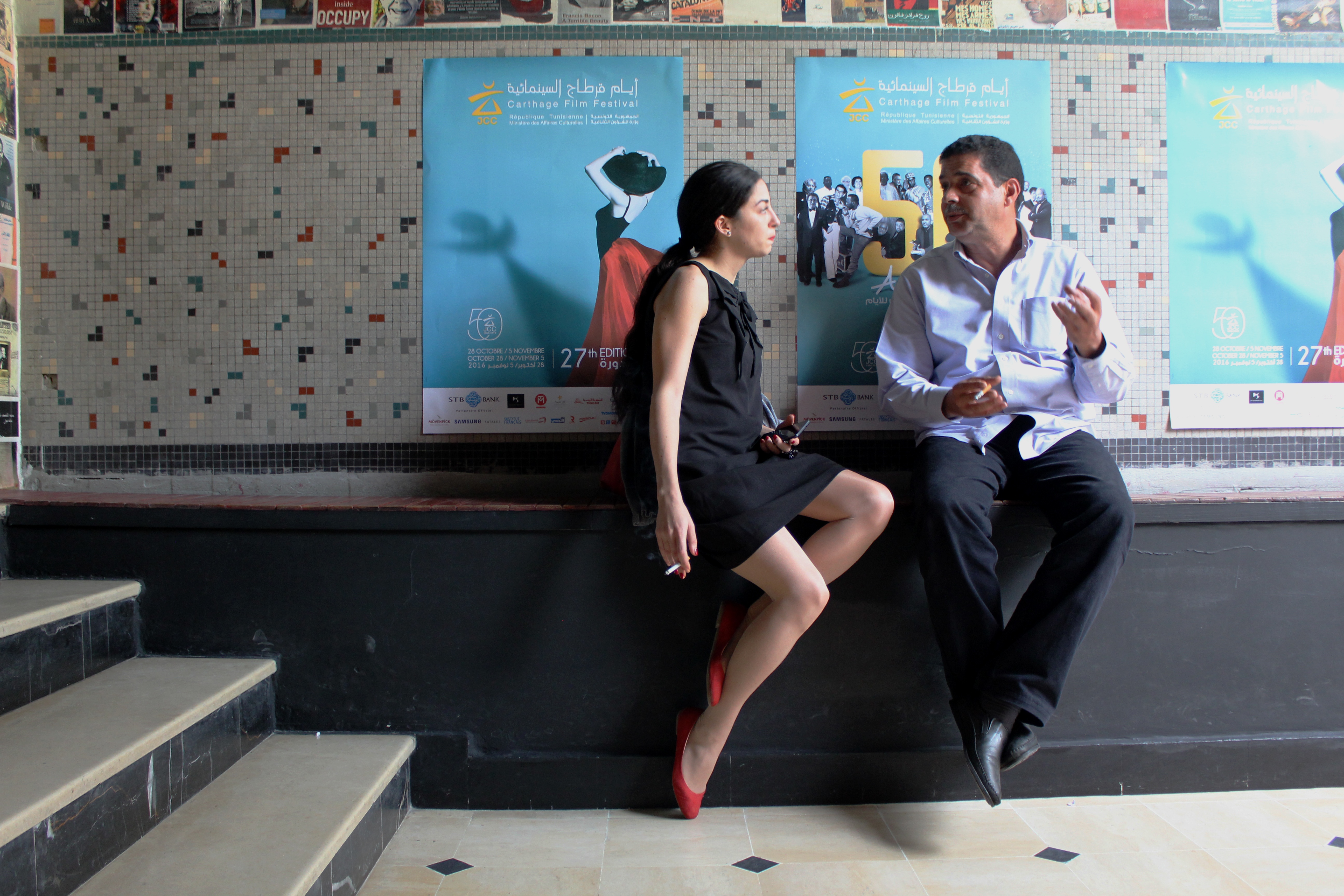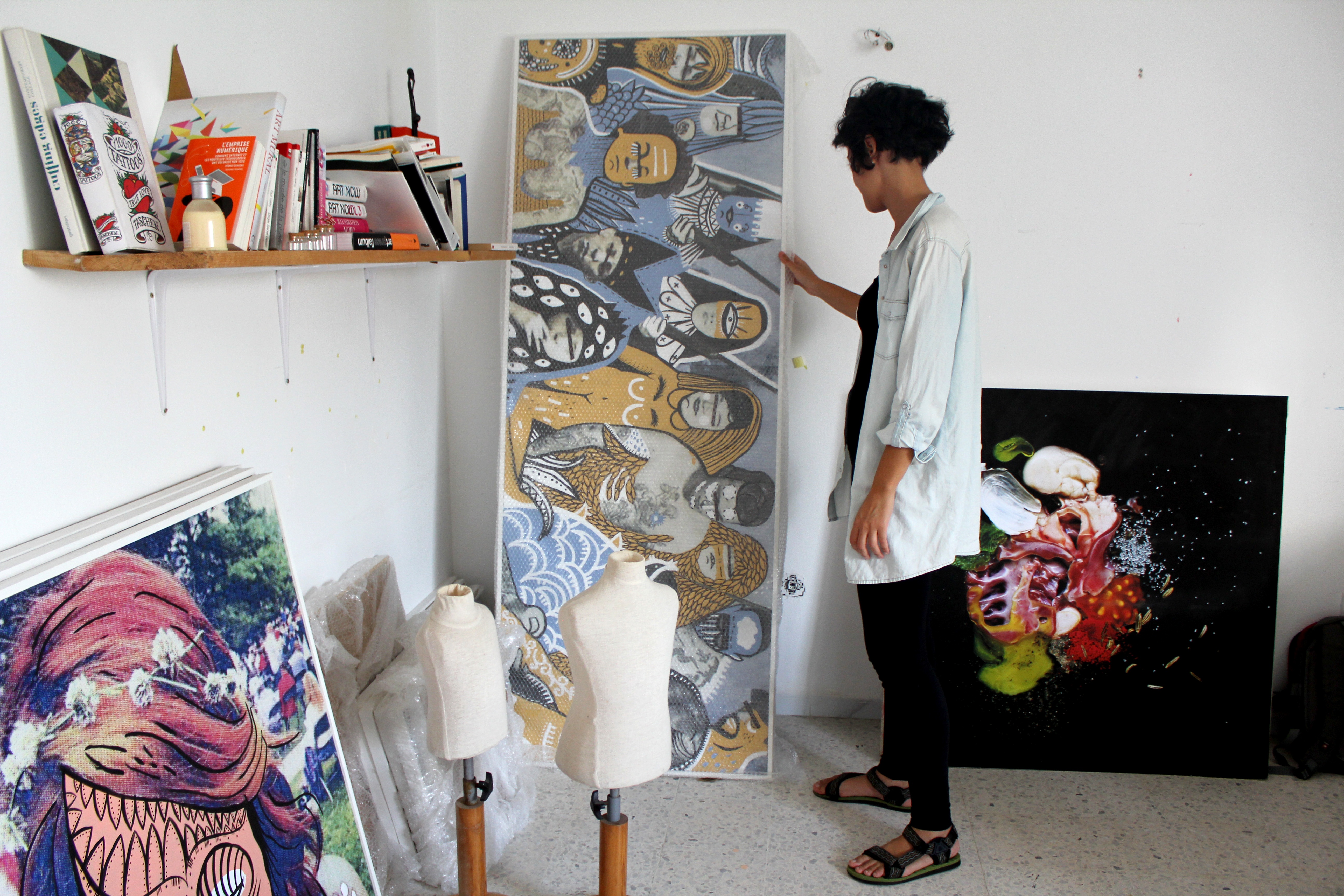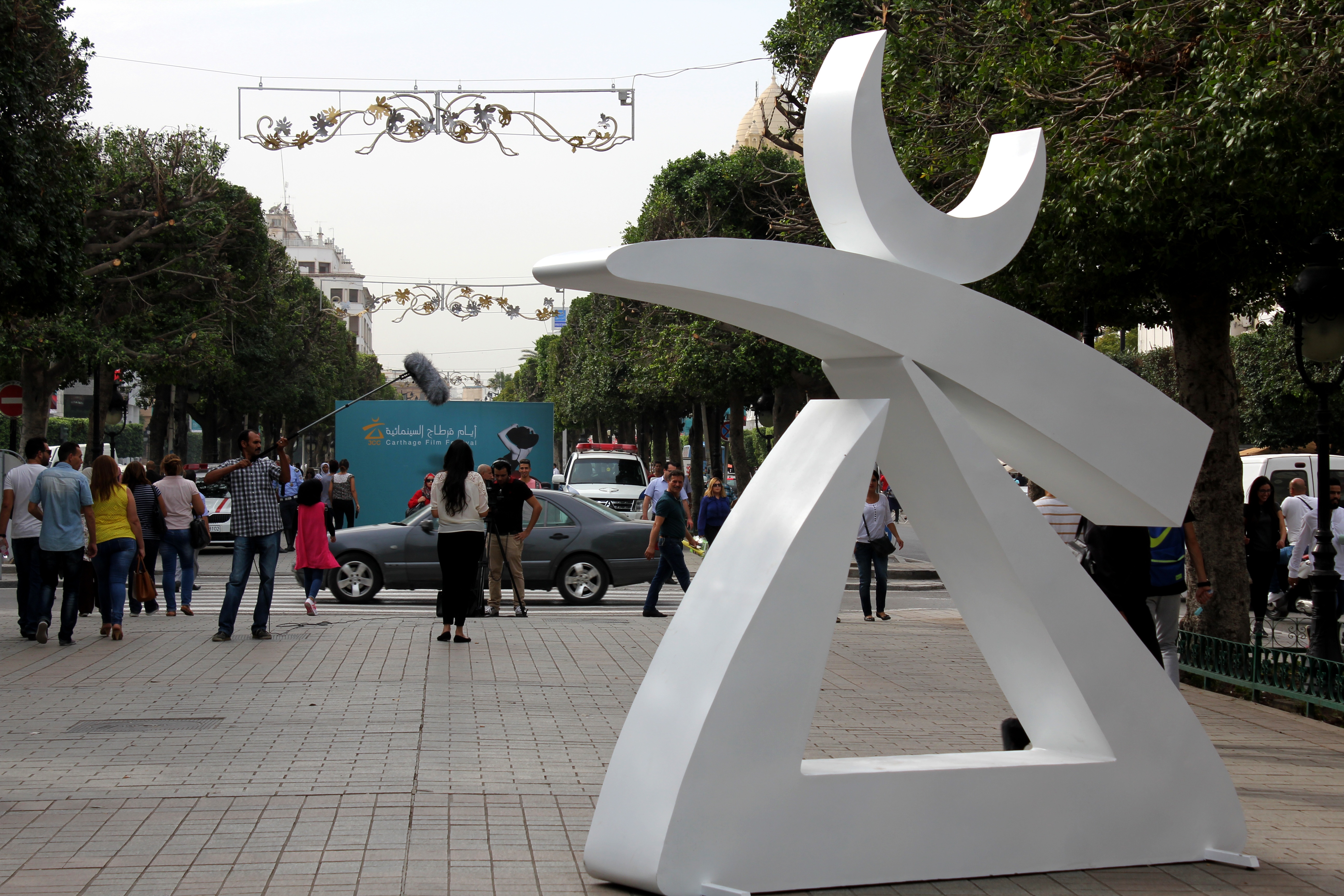The business of art: Tunisian artists-turned-entrepreneurs

Even as the city of Tunis buzzed with excitement over a 50 year old annual film festival, the state of the arts in the country is dire, forcing many in the artistic sector to become sometimes-unwilling entrepreneurs.
In this new ecosystem, each artist has become his own agent, investor and PR manager, and private foundations and sponsorships is replacing government support.
Habib Belhedi, 58, is the owner of Le Rio, a theater that he completely renovated in 2014. He, like a lot of theatre owners in Tunisia, is used to financing his own shows and be in the red most of the time.
“Sometimes we get funds from the government to finance the [transition to modern equipment] for instance, I was able to buy 3D equipment because of this help but we don’t really make profit out of the cultural revenues” he said.

The Ministry of Culture had a budget of 228 million dinars for 2016 (US$100 million) in 2015, which Belhedi said largely went into running the ministry rather than the sector.
Making it
Only a few are success stories. Rochdi Belgasmi, a Tunisian dancer and choreographer, had to learn how to sell his art and his name, and raises money during European tours through crowdfunding to promote other artists in his own country.
“Dance is still considered as a sport and not an art for the Tunisian government so I never expected any help. I made my own way through hard work and networking,” he said.

Hend Sabri, a famous Tunisian actress who made her career in Egypt, took a 50 percent pay cut to make the local movie Flower of Aleppo, which opened the the movie opened the ceremony of Carthage Film Festival mentioned above. She said this kind of commitment was essential to keeping the local film industry going.
“We need to show solidarity to keep the cultural life alive,” she said.
The artist’s life
But for others, it is still a daily struggle. Amal Amraoui walks like a ballerina, dresses like an Italian actress from the 60s and speaks in a deep voice while smoking her cigarette.
At 28 years old, this wannabe actress gave up on her civil engineering career to join the messy scene of Tunisian theater.
“My first rehearsals for a play took place in a dump downtown with rats and dampness, we would rehearse seven hours per day for eight months for 700 dinars (US$306) each month. I left my parents’ home to live with people from the company. And then, we could only perform three times the play because there was no money to produce us or theaters which would schedule the play.”

No free PR
Tunisia’s art sector is uneven with few spaces available for the number of artists who want to exhibit their work. The country has five art galleries and around 500 plastic artists registered in unions, 15 movie theaters and five official playhouses, yet more than 400 theater associations and 250 theater companies.
Hela Lamine, 32, a plastic artist often feels alone when it comes to promoting herself. “I use Facebook a lot to monitor open calls for exhibition or projects,” she said. One of her projects ‘The life of Samantha C’ actually showcased a character she’d developed on Facebook. After holding an exhibition in an art gallery, Lamine has been exploring other options such as an exhibition in a downtown makeup store with a curator who tries to put more art in companies or stores.

Olfa Feki is a young art curator who built a career as a curator by managing artists on a freelance basis.
Her ambition is to give visibility to Tunisia on the African art scene, and then the world. “How come Tunisia is not even part of Africa contemporary art whereas African art is trending now?”
Zero planning
An artist movement began after the revolution, but without a plan that could lead to a more structured scene. Tunisia is missing on the international art market, whereas its neighbor Morocco is taking every opportunity to nurture new artists and promote its cultural image.
“Sometimes, it can be really bad for a Tunisian artist to go to an international fair because his rating increases and then he becomes too expensive for Tunisians [to buy his work] when he comes back to the country, it creates a gap beween the art gallery and the artist” said Adélaide Comby, manager of the Ghaya Gallery which is based in the tourist village Sidi Bou Saïd.

She said although there was great freedom for gallery owners to fix the rate of an artist’s work, as there was no local art market to use as a reference, sometimes those prices were not in favour of the artist.
Oussema Troudi, 36, a plastic artist went from being unknown to being bought by the Ministry of Culture commission, then dismissed, then exhibited in the Ghaya Gallery. “It is difficult to evaluate the rate of my work it started at 200 dinars (US$87) and went to 3,000 dinars (US$1,313),” he said.
Home and away
Leaving for France is one way to launch a creative business.
Troudi never left Tunisia to try and sell elsewhere, saying his role and vision was at home. Other disagree, like the artist Nidhal Chamekh, 31, who is the new rising star of the Selma Feriani Gallery in Tunis, or Douraid Souissi, a photographer who just left for a residency in France.

Nidhal Chamekh went first in France to finish his studies of plastic arts through a scholarship and stayed on, working on Tunisia but staying as a living artist in France. “I can get social security and register at the house of artists which gives me a professional status, in Tunisia, it is much more complex,” he said.
Boutheina El Aouadi, better known by her rapper name Medusa, just left the country for France using the two year ‘skilled and talent’ visa. It is offered by the French government to help foreign artists develop their projects. “I can’t grow here, I record all my demos at home with my husband, we don’t have a music label or even a music industry so if I want to record an album, I have to leave,” she said.
Outside help
For foundations like Kamel Lazaar, which was active in Tunisia for ten years with an annual budget of 150,000 dinars per year (US$68,000), the future holds a lot for Tunisian artists.
“In a way everything still has to be done and it is exciting,” said Elsa Despiney, head of collection for the Lazaar Foundation. The foundation will launch an inventory of MENA art on a mobile app called artMENA, for instance.
Others like the Olfa Rambourg Foundation, which launched only a year ago, have a budget of 3 millions dinars per year (US$1 million). The foundation is currently preparing the first exhibition about Tunisia’s history before the colonization, called “Rise of a nation” in an old palace they renovated.
While artists are now thinking about how to finance creative industries in Tunisia, many are choosing to rise on their own.

Feature image via Flickr Citizen59


